Orchids and Insectivorous Plants
After struggling with the reviews and controversy following the publication of the Origin, Darwin was relieved to turn to plants flowering in the spring of 1860. He soon learned that splendid orchid flowers contain intricate structures that accommodate pollinating insects. Darwin also began observing the insectivorous sundew. As so often happened with Darwin, interests that were at first leisurely pursued, turned into significant research programs.
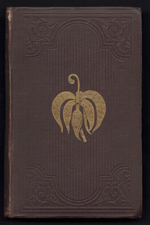 |
Charles Darwin. On the Various Contrivances by which British and Foreign Orchids are Fertilised by Insects, and on the Good Effects of Intercrossing. London: J. Murray, 1862. First edition. [zoom] Watching insects move in and out of many different species of orchids led Darwin to an organized series of observations. In his 1862 book, he showed how seldom a flower is fertilized by its own pollen. Darwin concluded that structures in the orchid flower enhanced cross-pollination. |
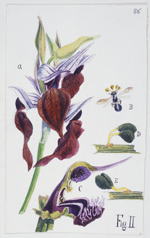 |
James Traherne Moggridge. Orchid Watercolor Sent from France. [zoom] Pencil and watercolor sketch of Serapias cordigera with its insect pollinator, sent to Darwin by James Traherne Moggridge in France. After his orchid book was published in 1862, Darwin began receiving letters with information on orchids from all over the world. Appreciation to the Syndics of the Cambridge University Library. |
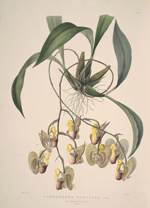 |
James Bateman. The Orchidaceæ of Mexico & Guatemala. London: For the author, J. Ridgway & sons, [1837-43]. [zoom] | Additional images: 
The director of the botanical garden in Trinidad, Hermann Crüger, wrote to Darwin about the pollination of several orchids, including Coryanthes speciosa with what Darwin called its “wonderful bucket of water.” In the second edition of his orchid book, Darwin used an illustration to help describe how bees fell into a bucket which was full of fluid. As the bees crawled out of the bucket, the pollen caught onto their midsections. The bees proceeded to the next flower, and as they climbed out of that flower, the pollen was attached to the flower’s stigma, ensuring cross-pollination. |
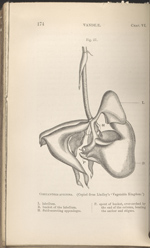 |
Charles Darwin. The Various Contrivances by which Orchids are Fertilised by Insects. London: J. Murray, 1877. Second edition, revised. [zoom] | Additional images: 
|
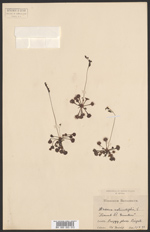 |
Common Sundew (Drosera rotundifolia). [zoom] Nineteenth-century specimen of the insectivorous sundew, collected not far from where Darwin started observing the species. On loan from L.H. Bailey Hortorium Herbarium, Cornell University. |
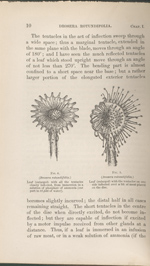 |
Charles Darwin. Insectivorous plants. New York: D. Appleton and Company, 1875. First American edition. [zoom] | Additional images: 
Shown are leaves of the common sundew whose tentacles bent when immersed in phosphate of ammonia, just as they did when digesting an insect. Darwin launched a series of experiments to test the reaction of plants to different substances. The work he began in 1860 eventually culminated in this book. |
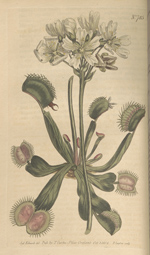 |
Curtis’s Botanical Magazine …. London: T. Curtis, 1804. Vol. 19, plate 785. [zoom] Darwin concentrated on the common sundew, but he also studied other insectivorous plants, including the Venus flytrap (Dionaea muscipula). Always seeking to determine the gradation of one species into another, Darwin concluded that the Dionaea, with sticky leaves that moved quickly to trap insects, had derived from the simpler form of the sundew (Drosera). |